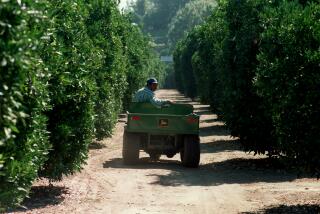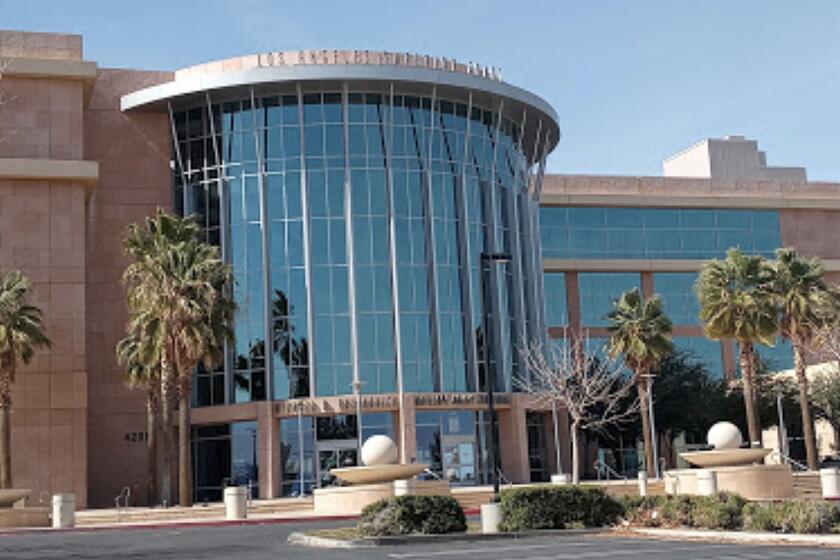Hidden Heritage : Exploring The Valley’s American Indian Past
- Share via
When Spanish explorers entered the San Fernando Valley in 1769, the Valley was home to 3,500 to 5,000 American Indians.
Described as generous and compassionate by the Spaniards--who also branded them “heathens”--the natives lived along the Valley’s rim, near fresh water, hunting deer and antelope and living off seeds, pine nuts and corn mush. In that initial meeting, the Indians were curious and exchanged gifts of acorns and berries with gifts from the Spaniards.
The San Fernando Mission, founded Sept. 8, 1797, was built as part of a plan to convert Indians across California to Christianity. The Indians were not initially taken to the missions by force, but came voluntarily, attracted by the food, clothing and shelter in addition to the beauty of religious services. But under Spanish law, the Indians could not leave and those who did were tracked down, flogged and put in irons. Work for the 1,100 Indians at the San Fernando Mission was hard and lasted from morning to sunset. Swiftly, a culture and way of life that was thousands of years old was largely obliterated.
Population Rebounds
Diseases introduced by Europeans, such as smallpox, measles and influenza, devastated California’s indigenous population. Thousands of others fled the region. Many of the American Indians living in California today have moved in from other states.
1769: 300,000
1850: 100,000
1900: 15,000
1990: 236,000
Canyon of “Big Thunder”
To the Fernandeno Indians, descendants of the Shoshone, the Valley was Achois Comihabit or simply Comihabit. Those names are largely forgotten, but some American Indian place names, or their derivatives, are still used today:
Tujunga: Fernandeno word for “big thunder.”
Cahuenga: Fernandeno word for “place in the mountains” or “little hills.”
Castaic: Chumash Indian word for “my eyes.” Topanga: Fernandeno word for “a place where the mountains run out to the sea.”
Topanga: Fernandeno word for “place where the mountains run out to the sea.”
“We Came Upon Two Large Villages ... “
Diarist and Franciscan missionary Juan Crespi, traveling with Spanish explorers when they reached the Valley on Aug. 5, 1769 , recorded this scene from what is now believed to be the Lost Village of Encino:
“...We set up camp beneath a large live oak upon the south side of the valley, here close to a very large pool of very pure water at the foot of the mountain range on this side; where we came upon two large villages of very fine, well-behaved and very friendly heathens who must have amounted to about 200 souls, men, women and children.
“Indeed, these heathen folk have pleased us a great deal, having been (as they have) spending the whole day sitting with us, entirely without weapons or fear, as though they had been dealing with us forever.”
Lost Village of Encino: More than 2 million artifacts--from stone tools, to arrowheads to beads--were unearthed in 1985 during routine construction at the southeast corner of Balboa and Ventura boulevards. The artifacts are thought to be from an American Indian community that lived in the area for 3,000 years up until the late 18th Century.
Chief Little Bear’s Thoughts
“The mission is a place where we can take our children and say to them, ‘This is what your ancestors did.’ We’ve done a lot for this community and we are proud of it.” --Rudy Ortega (Chief Little Bear), 67, of San Fernando, who is chief of the Fernandeno Tribe.
Sources: Rudy Ortega; Bobbette Fleschler, president of the San Fernando Valley Historical Society; “The Story of the San Fernando Mission,” “The San Fernando Valley” and “Handbook of the Indians of California.”
More to Read
Sign up for Essential California
The most important California stories and recommendations in your inbox every morning.
You may occasionally receive promotional content from the Los Angeles Times.










